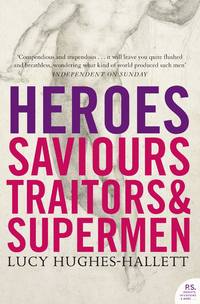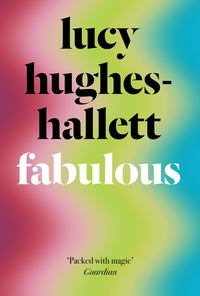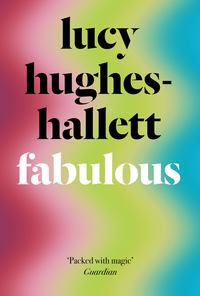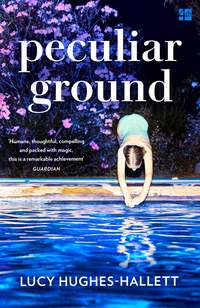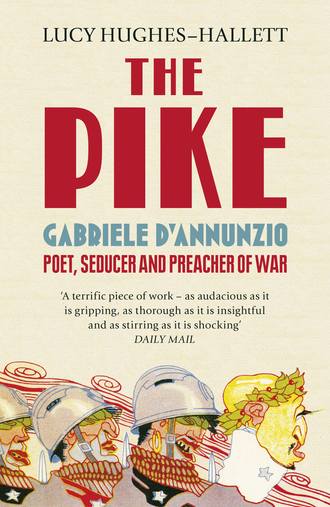
Полная версия
The Pike: Gabriele d’Annunzio, Poet, Seducer and Preacher of War
By the summer of 1880, when Gabriele was seventeen, with another year of school ahead of him, he was already an established member of the Cenacolo, riding over from Pescara or moving in to stay, initially in Michetti’s small house by the sea and later in the rambling deconsecrated convent which Michetti transformed into his studio and home. ‘Oh beautiful days of Francavilla!’ he wrote later, recalling the ‘solitary beachside house’, through all of whose rooms blew the salty sea wind: ‘There life bloomed.’ He was, by more than a decade, the youngest of the group, several of whom were men with well-established reputations. If Nencioni and his other invited mentors had been the tutors who saw him through his secondary education, the Cenacolo was his university. He and Michetti talked and talked, ‘seven hours on end’, he told Elda, ‘and always about Art, always about Art’.
It was not, primarily, a literary group. Among Michetti’s friends, poets were outnumbered by artists, musicians, scholars. One of d’Annunzio’s great strengths as a writer and as a cultural commentator was that he was as knowledgeable about music and the visual arts as he was about literature, and valued them as highly. He was always intensely observant of visual effects. He was an exhaustive sightseer. His plan to visit the exhibition of contemporary art in Milan was not just a ploy to put Elda off. He was really excited by the prospect. Artworks perform important functions in his novels and plays, as symbols, as points of reference, as inspiration, as aphrodisiacs. One of his heroes models himself on a portrait by Leonardo. Another propositions a woman by telling her that he can see from her hands that her naked body would be as lovely as that of Correggio’s Danae. His poetry is full of colour. He frequently dresses his novels’ heroines in grey, but not just any old grey. He specifies each shade: the grey of ashes, of pigeon feathers, of pewter or a pale sky. At Francavilla he was learning to see through his painter-friend’s eyes. His early stories are full of brilliant unexpected colour: scarlet poppies luminous against a bleached background of dry rock, sky the colour of beryl or turquoise, purple mountains, a beggar’s crimson jacket, a river bright green with reflected trees and – over and over again – the almost fluorescent brilliance of orange and tawny-brown sails on a silver or lead-grey sea. These were the scenes Michetti painted. D’Annunzio’s task was to convert his images into words.
His ear was as discriminating as his eye. His most anthologised poem, La Pioggia nel Pineto (Rain in the Pine Wood), is a piece of beautifully modulated word-music which at once describes and imitates the sounds made by rain falling on leaves. He boasted that he once astounded the conductor Toscanini by detecting which instrument in an orchestra was out of tune. Throughout his life music was one of his greatest pleasures. ‘No one,’ wrote Romain Rolland, ‘could hear music better than he.’
At Francavilla he could talk about composition with composers, and observe how a sculptor and a painter gave form to their visions. There he would write, so he tells us, in rooms papered with his host’s sketches, with the sculptor Barbella modelling a bust beside him, with another comrade playing Schubert on a mandolin, and Tosti singing the refrain of a lullaby. ‘[Michetti’s] villa is truly the Temple of Art and we are its priests.’
It was in that temple that d’Annunzio began to see his native region as a fit subject for literary treatment. With Michetti he embarked on long rides into the region’s mountainous hinterland. These outings took him into a world at once archaic and exotic. The rural people were ‘almost dwarfs, with snub noses and flattened lips’, but dressed with a kind of ‘oriental’ splendour. D’Annunzio described a wedding party as a riot of ‘silk dresses, brocade scarves, big gold earrings; toasts accompanied by the delirious-making hum of guitars … gunshots … hailstorm of confetti … joyful cries’.
The members of the Cenacolo all shared an interest in the traditional culture of the Abruzzi. Tosti was collecting folk songs. Michetti’s friends also included Gennaro Finamore, author of a vocabulary of the Abruzzese dialect and a transcriber of folk tales, and the ethnologist Antonio de Nino, whose Abruzzese Customs and Costumes ran to six volumes. The poet Bruni wrote verse in the Abruzzese dialect, which Tosti set to music for a ‘chorus of youths’ to sing during an al fresco ceremony on Easter Monday. The subject of all Michetti’s art, wrote d’Annunzio later, was the ‘ancient vital race of the Abruzzi, so vigorous, so thoughtful, so full of song’.
For over a century European intellectuals had been searching in isolated rural communities for remnants of obsolete folk cultures. Ethnography was practised most enthusiastically in situations where nationalism needed to assert itself against an alien regime. James Macpherson, ‘discovering’ ancient Gaelic poems (most of them, published under the name of Ossian, his own forgeries) and his admirer and successor Sir Walter Scott, collecting songs and tales in the Scottish Highlands, were intent on demonstrating that Scotland had as rich a cultural heritage as England, its politically dominant neighbour to the south. While Jacob and Wilhelm Grimm were growing up, the majority of German states were under Napoleonic rule. Their collecting of fairy tales ‘found among the common German peasantry’ was not just conservationist, it was ‘imaginative state-building’. The Gaelic League, set up in Ireland in 1893 for the preservation and promotion of Gaelic language and literature, aimed to provide inspiration for an independent Irish state.
So Michetti, touring the Abruzzi in search of picturesque peasant girls in embroidered bodices and home-spun red skirts, and Tosti, with his transcriptions of the songs sung by harvesters in the fields, were providing the cultural underpinnings for the new Italian nation. But it was not easy, as many patriotic ethnographers discovered, to identify authentic relics of indigenous culture. Several of the stories the Grimms collected to provide the new Germany with an unadulterated German back-story were in fact imported by French Huguenots. So d’Annunzio’s Italian friends were swayed by non-Italian influences. Their subject matter was local, but their interest in it was aroused by foreign examples. Michetti’s paintings owe much to the French realists: Corot, Courbet and Millet. Even the name of their fellowship was a borrowing. Over half a century earlier, in Paris, Victor Hugo had presided over a ‘Cénacle’.
At Francavilla, d’Annunzio swam: he was an exceptionally strong swimmer. ‘We bathed down there, like savages on the bare beach.’ He galloped his horse along the sand and rowed his little boat offshore. He and his friends cooked for each other, as inexpertly as young men accustomed to being waited on by servants or mothers have always cooked; he was to remember with pride a gigantic omelette he managed. Michetti posed his guests for photographs on the beach: d’Annunzio looks as faunlike as he liked to imagine himself – curly hair falling forward, a slight body taut with energy. There are women in some of the pictures, incongruously overdressed by contrast with the men, in long-sleeved gowns and big hats. This was not the monastic retreat d’Annunzio suggested in writing to Elda.
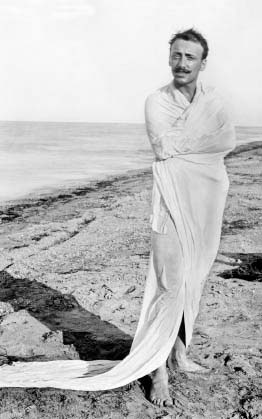
In the evenings there was wine, although d’Annunzio – then and for the rest of his life – was an abstemious drinker. There was opium, which he took to with gusto (‘in no time I became a passionate opium eater’). Aware that he was being ‘stunned’ by the drug, he soon left off taking it (‘but what beautiful moments I had!’). At night, sitting out among olive trees whose branches had been turned silver by the full moon (an effect d’Annunzio would use repeatedly in his fiction), they sang the choruses and lullabies that Tosti had been collecting and weaving into his newly composed ‘serenades’. Sometimes they would hear those eerie, repetitive melodies echoed back to them by unseen workers in the countryside around.
During the summer of 1880, Michetti and d’Annunzio made two excursions which were to be particularly fruitful for both of them. One took them to the village of Tocco di Casauria at harvest time. There they witnessed a scene involving a handsome young woman and some drunken harvesters. Michetti began that winter to make studies for one of his most celebrated paintings, La Figlia di Jorio (Jorio’s Daughter), which was finally exhibited at the first Venice Biennale fourteen years later. It shows a peasant girl, in a scarlet dress and shawl, hurrying past a group of leering men. D’Annunzio was to make something much more violent of the subject. He described the event in an interview: ‘Suddenly there burst into the little square a beautiful young woman, crying and dishevelled, followed by a throng of harvesters, brutalised by the sun, by wine and lust.’ From that one tableau he would devise a story of sexual transgression and mob violence which, nearly a quarter of a century later, became his most successful play, also called Jorio’s Daughter.
The other memorable outing was their visit, on a suffocatingly hot summer’s day, to the church of San Pantaleone at Miglianico. The church was crammed with pilgrims who had come to celebrate the saint’s feast day, to expiate sins and pray for miracles. Michetti depicted the scene in his painting The Vow, which was exhibited in Rome in 1883 to great acclaim. He makes a grand spectacle of the gorgeous colours of the girls’ embroidered costumes, the slanting light from the church’s high windows and the tragic drama of the dying come to beg for grace.
To d’Annunzio, though, the scene in the church was a horror show. In his account an animal stench rises from the bodies crammed together in the dimly lit church. At the centre of the crowd a kind of furrow is left open, a narrow passage walled with humanity, along which crawl devotees. ‘Three, four, five lunatics came writhing with their bellies on the ground, with their tongues on the dust of the tiles, with their feet rigidly flexed to support the weight of their bodies. Reptiles.’ There is blood on their feet and hands. They are licking the floor before them as they inch forward, drawing crosses with their own saliva. ‘The red stains that one fanatic has left, are rubbed by the dry tongue of the next fanatic.’ The crawlers, one by one, approach the silver effigy of the saint, each one grasping him around the neck ‘with a supreme effort which seemed akin to hatred’ and each fix a bleeding mouth to the saint’s metal mouth and hang there, ‘with a kind of convulsion of pleasure’. The watchers moan.
D’Annunzio was to return to the scene again and again. His fullest description of what he had seen at Miglianico would not be published for another fifteen years, forming part of The Triumph of Death, but in his early stories he repeatedly plays variations on the themes of religious solace, religious frenzy, and the power of the mob.
During his last winter at school, d’Annunzio wrote several of the short stories which would be published in his first prose collection, Terra Virgine. Probably prompted by Tito Zucconi, he was reading Zola (in particular The Sin of Father Mouret), Victor Hugo’s Hunchback of Notre Dame, and Giovanni Verga’s newly published Life in the Fields. Soon, he discovered de Maupassant and Flaubert. Each new addition to his reading list can be detected in his own writing. He lifts a great deal from his foreign examples. He repeats phrases and reproduces syntactical construction. His plots are borrowed (one of his tragic-comic lovers is a bell ringer who pines away for love of a gypsy girl). His structures are ready made (The Virgin Anna follows the progression of Flaubert’s Un Cœur simple movement by movement). More importantly, the other writers’ realism had shown d’Annunzio that he could make use of the material he had found in his native province.
D’Annunzio was not a sentimentalist like Victor Hugo, nor a campaigner for social justice like Zola. When he describes the stultifying hardness of the lives of peasants or labourers, he does so not with compassion but with something closer to disgust. His stories of the Abruzzi are full of stupid violence. A beggar exhibiting his crippled child, a fisherman’s love perverted by jealousy, a pathetic idiot who takes pleasure in killing lizards very, very slowly. D’Annunzio took these examples of human degradation and embroidered around each of them a piece of carefully wrought prose. Michetti and his friends had taught him to pay attention to the culture of his homeland, with its rich heritage of ritual and belief. They had not persuaded him to like it. He has one of his fictional alter egos reflect that to discover that the countryside, whose beauty he loves, is home to so much primitive fear and credulity, is like running one’s fingers through a woman’s scented hair only to find, hidden beneath, ‘a teeming mass of lice’.
D’Annunzio’s sense of homeland would become an important theme in his politics and his self-presentation – ‘I carry the soil of the Abruzzi on the soles of my feet,’ he wrote – but he certainly didn’t want to live there. In 1914 the Pescaran authorities offered to give him a house in recognition of his status as the region’s great man. He declined. He was by then bankrupt in Italy and amassing enormous debts in France too, but for him the Abruzzi was a philistine backwater and Pescara a place redolent of old age and gross, squalid sins. Despite professing the greatest affection for what he called ‘my Abruzzi’, he much preferred swindling hoteliers or sponging off his admirers to being confined to his homeland.

YOUTH
SING THE IMMENSE JOY … of being young,’ wrote the eighteen-year-old d’Annunzio. ‘Of biting the fruits of the earth/With sound, white voracious teeth.’ The clandestine nationalist movement which Giuseppe Mazzini had founded in the 1830s, and which eventually drove the Risorgimento, was called Young Italy, signalling that the new nation was to be, not an amalgam of the decrepit statelets it united, but a vigorous new entity. D’Annunzio would employ the same rhetoric once he began his political career, but he also prized youth for its own sake. And when he first arrived in Rome he could exult in being the youngest of his circle of friends and patrons.
That circle was ready. The night before he set out for Rome in November 1881, he wrote to Elda, pretending to complain about his precocious celebrity. ‘So, so many friends are waiting for me there, so many admirers. It’ll be a fearful bore for the first few days!’
He was registered at the university’s Faculty of Literature, he may even have attended a few lectures. But most of his energies were directed elsewhere. While he was still at school his first published stories had appeared in the Fanfulla della Domenica, whose editorial board included his mentor Nenciono and in whose pages Chiarini’s generous review of Primo Vere had been published. Another useful contact was a fellow Abruzzese, Edoardo Scarfoglio, poet and editor of the weekly paper Capitan Fracassa – irreverent, satirical, written by and aimed at the young. It was Scarfoglio who, yawning at his desk one day, had been so electrified by d’Annunzio’s first appearance in his office, and it was Scarfoglio with whom, the following summer, d’Annunzio would take off for Sardinia. With his already published volumes as calling-cards, d’Annunzio was soon a prolific freelance writer, selling poems, stories and occasional pieces to the journals springing up to feed the new market of educated middle-class readers.
Scarfoglio saw him as something from the pages of Chateaubriand or Victor Hugo, ‘the incarnation of the romantic ideal of the poet’. Another of his new acquaintances described his ‘chestnut locks, slick and scented with unguents’ (all his life he tended his body as carefully as any courtesan), and his ‘forehead as smooth and white as that of a small angel in a Church procession’. Before long he met Angelo Sommaruga, a risk-taking young impresario (who would soon be facing criminal charges for bribery and extortion). Sommaruga prided himself on his readiness to take on potentially scandalous new work. Soon he had d’Annunzio contributing to his magazine, and had undertaken to publish the young author’s next volume of verse, and his first collection of stories.
It was only just over a decade since the Pope had ceded his temporal power to Italy, and the Italian government, formerly based in Turin, had moved to Rome. For centuries the city had been a beautiful backwater. By 1881 it was an enormous building site. Olive groves and cow pastures and aristocratic gardens which had survived within the ancient walls for a millennium were being built over to accommodate the hordes of politicians and courtiers and civil servants and journalists and entrepreneurs who had descended on the newly booming city.
D’Annunzio lodged initially in an attic room in the heart of the city, between the Corso and the Piazza di Spagna. Close by was a brothel. When he returned home at night he would find its clients leaning against his front door or attempting to kick it in. Physically energetic, he went to the fencing schools in the mornings, and rode out into the countryside in the afternoons. He enjoyed his new friends. The Capitan Fracassa’s editorial office, facetiously nicknamed the ‘yellow drawing room’, was a single room above a beer shop, whose two windows gave onto a narrow alley. Its yellow wallpaper was covered with sketches and slogans left by the writers, artists, actors and politicians who came there to deliver their contributions and to pick up gossip. It was always buzzing with conversation, and when more space was needed the regulars would move on to the pastry shop nearby, where they had euphoric dawn breakfasts after the journal had been put to bed each week. Sommaruga’s Cronaca Bizantina had grander premises in the Palazzo Ruspoli and a more louche atmosphere. D’Annunzio described himself taking the stairs one morning ‘with great leaps’, hopeful of finding there ‘a magnificent, unlettered lady’ for whose favours he and some of his fellow writers were competing.
Michetti provided introductions. There were convivial evenings in the Caffè Roma or the elegant eighteenth-century Caffè Greco. The latter was a favourite meeting place for painters, several of whom would become d’Annunzio’s friends and the illustrators of his books. There were evenings with Paolo Tosti ‘in a mysterious apartment full of dark corridors’. Tosti would improvise at the piano for hours on end, while the singer Mary Tescher, in black lace and jet jewellery, sang Schubert’s Lieder and the guests lolled on sofas or on the floor. There were gatherings at the studio of the sculptor Moïse Ezekiel inside the ruins of the Baths of Diocletian. There were evenings in a house down by the Tiber where a ‘pleiade’ of young artists lived and worked. There were available women. D’Annunzio wrote to an Abruzzese friend boasting that he had inscribed some verses ‘on the white shoulders of a lascivious hetaera’. The tableau evoked is literary – d’Annunzio is modelling his self-image here on the cynical Vicomte de Valmont in Laclos’s Les Liaisons Dangereuses. But what he is describing is a visit to a brothel.
In the year and a half between his first arrival in Rome and his marriage, d’Annunzio wrote a sequence of poems in which lubriciousness alternates with a nauseous revulsion from sex. The sonnet L’Inconsapevole epitomises the mood. It describes luxuriant foliage fertilised by the rotting flesh of a corpse, and someone reaching out to pluck a flower like a bloody wound and finding his hand stung by a bitter poison. The poems triggered off a heated public debate about ‘indecency’. D’Annunzio boasted that in them he described sex in impeccable prosody and with a frankness unknown since the work of the Renaissance pornographer, Pietro Aretino.
He writes about letting his tired head fall at dawn on sloping breasts, about ‘ascending a furrow’ between feminine loins. He devotes a sonnet to the sensation, vividly described, of fellatio. He was pursuing pleasure both in bed and on paper, but he was not happy about it. ‘Atrocious sadness of the unclean flesh when the flame of desire is extinguished in icy disgust and no veil of love is cast around the inert nakedness.’ In his first novel he gives his own taste for Aretino to a wholly unsympathetic character, a debauched English milord. He told Scarfoglio that he was craving the bracing cold of an Abruzzese winter, that he was feeling jaded and seedy. ‘The strength of my barbarous youth lies slain in the arms of women,’ he wrote in Sed non Satiatus. For him the female was always somehow overripe. Youth was pure, clean, strong, barbaric, male.

NOBILITY
ONE SUNDAY MORNING in May 1879 a troop of the Cicognini boys, preceded by the school band, marched in military order from Prato to Poggio a Caiano, some ten kilometres distant. They stopped for a picnic breakfast of bread, salami and wine in a park en route and picked between them an immense bunch of daisies. Somehow (because that was the kind of boy he was) it fell to Gabriele d’Annunzio to present the bouquet to the head teacher’s wife.
With flowers in their buttonholes and their cap bands, the boys marched on into Poggio. They were met by another band from the town, and, with shouts of ‘Long Live the King!’ they proceeded on to the Villa Medici, built by Giuliano di Sangallo for Lorenzo the Magnificent, and by this time a (seldom-used) royal residence.
D’Annunzio was enraptured. Here was a setting for the kind of life he dreamed of. ‘Great rooms painted with flowers and adorned with immensely valuable paintings: elegant and mysterious bedrooms; and everywhere a profusion of lamps, of mirrors, of carved chests, of marble tables, and over all something entrancingly venerable and ancient.’ He hung back as the other boys hurried out into the gardens. For a quarter of an hour he stayed alone in the frescoed salon that Vasari once called the most beautiful room in the world, indulging in a reverie that was part erotic fantasy, part awed contemplation of the glamour and grandeur of the Italian aristocracy. ‘I seemed to hear the rustle of Bianca Capello’s silk dress, to hear her yielding sighs and sweet words.’ Bianca Capello was a sixteenth-century beauty whose portrait by Allori d’Annunzio could have seen in the Uffizi. She and her Medici lover died mysteriously on the same day in 1578, probably poisoned by his relatives. D’Annunzio was thrilling himself with a tale of murder and forbidden passion. Any moment, he told himself, he might see a knight in armour, ‘his eyes flaming behind his visor, his sword unsheathed’.
The boys ate their lunch al fresco and went boating, but then it began to rain. An arched colonnade runs all around the villa at ground level. The boys took shelter there, and began to dance. It was a jolly scene, but for d’Annunzio, as precocious sexually as he was intellectually, it lacked a certain something. He had been eyeing the major-domo’s three daughters. He slipped into the house ‘for a glass of water’, and asked the prettiest of the trio if she would dance with him – ‘Just one waltz?’ She assented. They passed into the great salon. Soon some other boys joined them. ‘So we had a real dancing party … a bacchanal.’ He was twirling over the floor where Lorenzo the Magnificent had once trod, between walls decorated by some of the most revered artists of Italy’s golden past. ‘I enjoyed myself,’ the sixteen-year-old d’Annunzio told his mother; ‘very much; perhaps even very, very much.’
As a child in Pescara, d’Annunzio was a person of consequence, the mayor’s eldest son, living in one of the best houses in town. At the Villa Fuoco, the family’s country retreat, there were wide balustraded terraces, with stone pilasters topped by terracotta pots in the shape of the busts of kings and queens, their crowns formed by living aloe plants. When his father’s profligacy obliged the family to sell some land Gabriele watched the peasants, their dependants, crowding around his mother, as though around a queen going into exile. People brought offerings, a branch laden with apricots, a carafe of wine, a lamb. ‘Some of them knelt to kiss the hem of her dress. Others kissed my hands, bathing them with tears.’ Gabriele grew up with an expectation of deference. He would play with other children, but one of them later recalled that if anyone tried to question his leadership, ‘he would fire up, his face went red and three veins would swell visibly on his forehead’. At home in the Abruzzi he seldom met anyone to whom he felt socially inferior.


